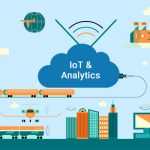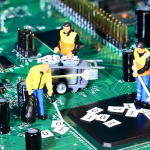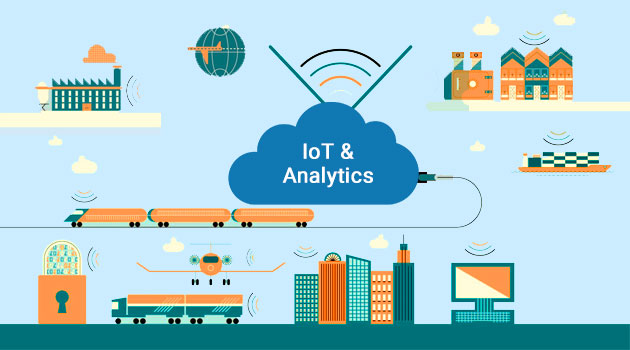The growth of the Internet of Things (IoT) is generating vast data streams from connected devices and sensors. But to drive real value, IoT solutions require analytics to translate raw data into actionable intelligence. Advanced analytics will be crucial for extracting insights from massive, complex IoT datasets.
Enabling Predictive Maintenance
Sensors on industrial equipment produce data that analytics can analyze to spot signs of impending failures. Subtle anomalies in vibration, temperature, or power draw data can indicate emerging faults. Predictive algorithms learn baseline patterns to identify out-of-norm precursors to breakdowns.
This predictive maintenance allows proactive repair before failures disrupt operations. Juniper Research Director Windsor Holden noted, “Analytics drives the ROI for IoT solutions by preventing costly industrial equipment downtime.”
Optimizing Quality Control
In manufacturing, IoT sensors paired with analytics provide real-time quality monitoring. Algorithms flag anomalies in product data indicating defects. Machine learning models can even suggest corrective actions to eliminate flaws at the source.
Continuous improvement in quality boosts yields. As Rockwell Automation CEO Blake Moret commented, “Actionable intelligence from IoT analytics is crucial for rapidly detecting and eradicating defects.”
Improving Operational Efficiency
For facilities management, IoT analytics help optimize energy, occupant comfort, and maintenance. Algorithms identify inefficiencies in HVAC, lighting, supply chains, and staff utilization. Managers can then continuously tune operations based on data.
“IoT analytics guides evidence-based operational changes that reduce costs up to 20%,” noted Daniel Cooper, Vice President at Transwestern Consulting Group.
Personalizing Customer Experiences
In retail, sensors and analytics combine to provide tailored in-store experiences. Cameras track browsing habits while wifi monitors guide associates to assist customers. Shoppers receive recommendations based on their routes and handling of items.
“Next-generation retail leverages IoT analytics to provide a personalized, elevated shopping experience,” said Diane Shelley, Industry Director for Retail at NetApp.
Optimizing Product Design
Product designers utilize IoT field data to improve future designs and features. Analysis of sensor data reveals how products are actually used and where they fail. This feedback loop fine-tunes designs to better match customer needs while increasing lifespan.
“Our IoT analytics uncover unique product insights from real-world use that drive engineering innovation,” remarked John Deere CIO Ganesh Jayaram.
Enhancing Traffic Management
Urban traffic planners apply analytics to IoT transportation data to model flows, optimize signals, detect incidents, and warn drivers. By analyzing real-time data from cameras and vehicle sensors, cities ease congestion and improve safety.
“IoT transportation analytics enable data-driven traffic strategies that reduce commuter frustrations,” said Lauren Isaac, Director of Policy at Transportation for America.
Preventing Cyber Threats
For IoT security, analytics examine device connection logs, network traffic, and behavior patterns to identify vulnerabilities and detect attacks. Abnormal IoT sensor activity may reveal compromised devices. Analytics can automatically isolate suspected threats.
“Vigilant analytics are essential for securing the rapidly growing and inherently vulnerable IoT ecosystem,” commented Dr. Hugh Thompson, Chief Technology Officer at Symantec.
Monitoring Public Health and Safety
Government agencies are utilizing IoT sensors and analytics for wide-scale public health and safety monitoring. Environmental threat data informs proactive health policies. And crime statistics identify prevention opportunities.
“IoT data and clever analytics create smart cities with healthy, secure communities,” noted Erica Marat, Associate Professor at National Defense University.
Driving Business Decisions
At the enterprise level, IoT analytics support data-driven business decisions on new markets, partnerships, investments, and hiring. Sensor data provides objective demand signals. Executives gain reliable insights to guide strategy.
“We see IoT analytics becoming an essential element of competitive business intelligence across industries,” explained Accenture Managing Director Bhaskar Ghosh.
Preparing Inputs for AI
Looking forward, IoT analytics will be vital for preparing real-world data to train artificial intelligence algorithms. Cleaned and labeled IoT sensor feeds will teach neural networks to make ever-smarter automated decisions from real environments.
As Gartner analyst Elana Johnson said, “IoT analytics will fuel the next leap in contextual AI-based automation across sectors.”
In summary, sophisticated analytics unlock the tremendous business potential of IoT technologies. Analytics empower organizations to translate IoT data into operational optimization, product improvements, customer experiences, and sharper decision making. Investing in analytics skills and solutions is imperative to maximize IoT value.

















